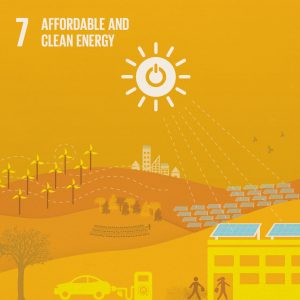“We are like tenant farmers, chopping down the fence around our house for fuel, when we should be using nature’s inexhaustible sources of energy—sun, wind, and tide. I’d put my money on the sun and solar energy. What a source of power! I hope we don’t have to wait until oil and coal run out before we tackle that.” Thomas Edison as quoted by James D Newton
At the conclusion of the so-called COP21 (21st Conference of the Parties on Climate Change) in Paris, 196 countries reached a final agreement to limit global temperature rise to 1.5 degrees Celsius. The agreement is far from perfect and the hard work of implementation remains, but still this is a big deal.
It means aggressive efforts to dramatically improve energy efficiency. It also means industrial countries like the United States committing to being 100% reliant on renewable energy by 2050. Developing nations have a 2080 deadline for conversion to 100% renewables. These initiatives will have very positive economic, social and environmental benefits.
How likely is this transition to renewable energy? The variety and pace of change is dramatic. Consider:
- Solar installer SolarCity has experienced a 40% drop in the per watt cost of solar photovoltaic (PV) panels since 2013.
- A National Renewable Energy Lab (NREL) report finds that wind power is likely to replace coal as the primary source of electricity in the United States.
- Goldman Sachs calculates that even without tax credits, in the next sixteen years solar will dominate the electricity market.
- Tony Seba predicts an even faster transition, with what he calls “clean disruption:” In his book by that name he writes “The industrial age of energy and transportation will be over by 2030. Maybe before.”
- National Geographic has created a very cool Blueprint for a Carbon Free America, where you can check out what each state’s 100% renewable mix will look like.
- California currently gets 40% of its power from renewables, and the state’s energy efficiency measures make it 40% more efficient than the rest of the country. The state’s economy is booming.
- The S. Navy is investing in what will be the globe’s largest solar farm to provide energy for 14 bases. This is the largest purchase of renewable energy ever by a Federal government entity.
- Energy storage is a game changer for relying on renewables since the sun doesn’t always shine and the wind doesn’t always blow. Tesla has created the PowerWall home battery for energy storage. Immediately after announcing the PowerWall demand exploded: there were 38,000 reservations placed in under a week and the first twelve months of production was sold out.
- Universities are making headway. As one example, last year American University and George Washington University worked together and signed a power purchase agreement with Duke Renewable Energy to produce 50% of both campuses power from a solar array in North Carolina. See other examples in higher education here from the U.S. Department of Energy.
- According to a 2015 Going Solar in America report by the North Carolina Clean Energy Technology Center, solar energy is already cheaper than the traditional electrical grid in 42 of the nation’s 50 largest cities.
- Alabama WISE offers advice to homeowners about renewable energy options and advocates for more renewable energy options in the state.
- AlabamaSAVES is a program of the Alabama Department of Economic and Community Affairs (ADECA) that received a $25 million grant from the U.S. Department of Energy to create an energy revolving loan program to improve energy efficiency and increase renewables for Alabama businesses and nongovernmental organizations.
- Coal use is in decline: in the U.S. coal use dropped 21% between 2007-2014, and more than one third of the nation’s coal-fired power plants have closed or will close soon. As of September 2014, coal producers Peabody Energy and Arch Coal have seen their market values drop by 61% and 94% respectively.
- Because of the changing economics of coal, the eventually of a market-correcting price being placed on carbon emissions, and the moral imperative to protect the future, a global movement is growing in the advocacy and investment worlds to advise and encourage investors to divest from fossil fuel stocks.
- The Environmental Protection Agency has a Green Power Partnership (GPP) program that acknowledges organizations making significant commitments to renewable energy. Here is a list of GPP 2015 Green Power Leadership Award recipients.
This is just a sample of what is happening. For more information a great place to start is the Rocky Mountain Institute.
The emphasis on efficiency and the transition to renewables is encouraging and very important. To avoid catastrophic climate change, we must get off of fossil fuels ASAP!
But even if climate change wasn’t a driving issue, there are many compelling reasons for making this transition in earnest. Former California Governor and Republican Arnold Schwarzenegger was and is an aggressive advocate for the transition to renewables. He has not been shy about dismissing those who claim climate science is a hoax. In a recent Facebook post entitled “I don’t give a (bleep) if we agree about climate change,” he asks three powerful questions in making the case that “a clean energy future is a wise investment.” It’s worth a read.
Former Saudi oil minister Sheikh Ahmed Zaki Yamani agrees with Schwarzenegger: “The Stone Age did not end for lack of stone, and the Oil (and fossil fuel in general) Age will end long before the world runs out of oil (and gas and coal).”
Auburn University is a signatory to the American College and University Presidents Climate Commitment and is part of the Climate Leadership Network. We have a Climate Action Plan that is due for an update and that commits Auburn to carbon neutrality by 2050. We are beginning to look seriously at how we can add renewable energy to our power mix as one way to help meet our goal. Stay tuned.
Learn about the SDGs & AU and our contributions related to this post.





